研究成果

Aug, 2023
Background: Reactive lymphadenopathies such as toxoplasmosis and cytomegalovirus lymphadenitis are associated with monocytoid cell proliferation. Monocytoid cells are B-lymphocytes with an undetermined subset.
Methods: Using digital spatial profiling whole transcriptome analyses, this study compared monocytoid and control B-cells. The B-cell subset of monocytoid cells was assigned according to gene expression profiles.
Results: This study identified 466 differentially expressed genes between monocytoid and control B-cells. The cellular deconvolution algorithm identified monocytoid cells as memory B-cells instead of as naïve B-cells. A comparison of the upregulated genes revealed that atypical memory B-cells had the largest number of genes overlapping with monocytoid cells compared with...
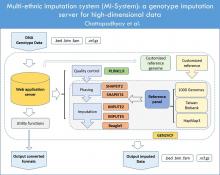
Jul, 2023
Objective: Genotype imputation is a commonly used technique that infers un-typed variants into a study's genotype data, allowing better identification of causal variants in disease studies. However, due to overrepresentation of Caucasian studies, there's a lack of understanding of genetic basis of health-outcomes in other ethnic populations. Therefore, facilitating imputation of missing key-predictor-variants that can potentially improve a risk health-outcome prediction model, specifically for Asian ancestry, is of utmost relevance.
Methods: We aimed to construct an imputation and analysis web-platform, that primarily facilitates, but is not limited to genotype imputation on East-Asians. The goal is to provide a collaborative imputation platform for researchers in the public...
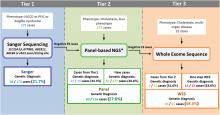
Jul, 2023
Objectives: To determine how advanced genetic analysis methods may help in clinical diagnosis.
Study design: We report a combined genetic diagnosis approach for patients with clinical suspicion of genetic liver diseases in a tertiary referral center, using tools either tier 1: Sanger sequencing on SLC2SA13, ATP8B1, ABCB11, ABCB4, and JAG1 genes, tier 2: panel-based next generation sequencing (NGS), or tier 3: whole-exome sequencing (WES) analysis.
Results: In a total of 374 patients undergoing genetic analysis, 175 patients received tier 1 Sanger sequencing based on phenotypic suspicion, and pathogenic variants were identified in 38 patients (21.7%). Tier 2 included 216 patients (39 of tier 1-negative patients) who received panel-based NGS, and pathogenic variants were identified in 60...
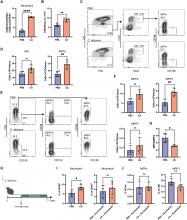
Jun, 2023
The paucity of blood granulocyte populations such as neutrophils in laboratory mice is a notable difference between this model organism and humans, but the cause of this species-specific difference is unclear. We previously demonstrated that laboratory mice released into a seminatural environment, referred to as rewilding, display an increase in blood granulocytes that is associated with expansion of fungi in the gut microbiota. Here, we find that tonic signals from fungal colonization induce sustained granulopoiesis through a mechanism distinct from emergency granulopoiesis, leading to a prolonged expansion of circulating neutrophils that promotes immunity. Fungal colonization after either rewilding or oral inoculation of laboratory mice with Candida albicans induced persistent expansion...
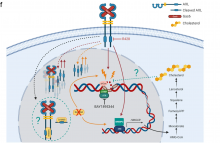
Jun, 2023
AXL is a receptor tyrosine kinase that is often overexpressed in cancers. It contributes to pathophysiology in cancer progression and therapeutic resistance, making it an emerging therapeutic target. The first-in-class AXL inhibitor bemcentinib (R428/BGB324) has been granted fast track designation by the U.S. Food and Drug Administration (FDA) in STK11-mutated advanced metastatic non-small cell lung cancer and was also reported to show selective sensitivity towards ovarian cancers (OC) with a Mesenchymal molecular subtype. In this study, we further explored AXL's role in mediating DNA damage responses by using OC as a disease model. AXL inhibition using R428 resulted in the increase of DNA damage with the concurrent upregulation of DNA damage response signalling molecules...
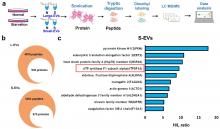
Jun, 2023
Ectopic ATP synthase on the plasma membrane (eATP synthase) has been found in various cancer types and is a potential target for cancer therapy. However, whether it provides a functional role in tumor progression remains unclear. Here, quantitative proteomics reveals that cancer cells under starvation stress express higher eATP synthase and enhance the production of extracellular vesicles (EVs), which are vital regulators within the tumor microenvironment. Further results show that eATP synthase generates extracellular ATP to stimulate EV secretion by enhancing P2X7 receptor-triggered Ca2+ influx. Surprisingly, eATP synthase is also located on the surface of tumor-secreted EVs. The EVs-surface eATP synthase increases the uptake of tumor-secreted EVs in Jurkat T-cells via association with...
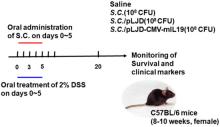
Jun, 2023
The imbalance of mucosal immunity in the lower gastrointestinal tract can lead to chronic inflammatory bowel diseases (IBDs), including Crohn's disease and ulcerative colitis. IBD is a chronic inflammatory disorder that causes small and/or large intestines ulceration. According to previous studies, recombinant interleukin (IL)-10 protein and genetically modified bacteria secreting IL-10 ameliorate dextran sulfate sodium (DSS)-induced colitis in mice. IL-19 is a transcriptional activator of IL-10 and can alter the balance of T helper 1 (Th)1/Th2 cells in favor of Th2. In this study, we aimed to investigate whether the expression of the murine IL-19 gene carried by Salmonella choleraesuis (S. choleraesuis) could ameliorate murine IBD. Our results showed that the attenuated S...

Jun, 2023
miR-194 is abundantly expressed in hepatocytes, and its depletion increases hepatic resistance to acetaminophen-induced acute injuries. In this study, the biological role of miR-194 in cholestatic liver injury was investigated by using miR-194/miR-192 cluster liver-specific knockout (LKO) mice, in which no liver injuries or metabolic disorders were predisposed. Bile duct ligation (BDL) and 1-naphthyl isothiocyanate (ANIT) were applied to LKO and matched control wild-type (WT) mice to induce hepatic cholestasis. Periportal liver damage, mortality rate, and liver injury biomarkers in LKO mice were significantly less than in WT mice after BDL and ANIT injection. Intrahepatic bile acid level was significantly lower in the LKO liver within 48 hours of BDL- and ANIT-induced cholestasis compared...
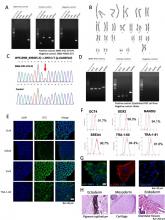
Jun, 2023
Pathogenic variants of the WFS1 gene can cause recessive-inherited Wolfram syndrome or dominant-inherited Wolfram-like syndrome with optic atrophy and hearing impairment. Using the Sendai virus delivery system, we generated induced pluripotent stem cells from the peripheral blood mononuclear cells of a female patient with the WFS1 pathogenic variant c.2051C > T (p.Ala684Val). The resulting induced pluripotent stem cells exhibited a normal karyotype and pluripotency, as confirmed using immunofluorescence staining, and differentiated into three germ layers in vivo. This cellular model provides a useful platform for investigating the pathogenic mechanisms of both blindness and deafness related to WFS1 variants.

Jun, 2023
Non-alcoholic fatty liver disease is associated with ageing, and impaired mitochondrial homeostasis is the main cause for hepatic ageing. Caloric restriction (CR) is a promising therapeutic approach for fatty liver. The purpose of the present study was to investigate the possibility of early-onset CR in decelerating the progression of ageing-related steatohepatitis. The putative mechanism associated with mitochondria was further determined. C57BL/6 male mice at 8 weeks of age were randomly assigned to one of three treatments: Young-AL (AL, ad libitum), Aged-AL, or Aged-CR (60% intake of AL). Mice were sacrificed when they were 7 months old (Young) or 20 months old (Aged). Aged-AL mice displayed the greatest body weight, liver weight, and liver relative weight among treatments. Steatosis,...